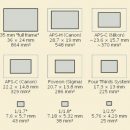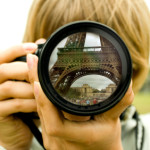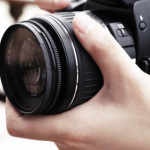Photography for the past century has remained the same, capturing image through light. Not much has changed, the general idea is still the same. Modern digital cameras and film cameras use light to create a photograph. During the film era, rolls of film were used instead of memory cards. While pinhole cameras and camera obscuras used various chemicals to get their picture and exposure takes as long as a couple of hours!
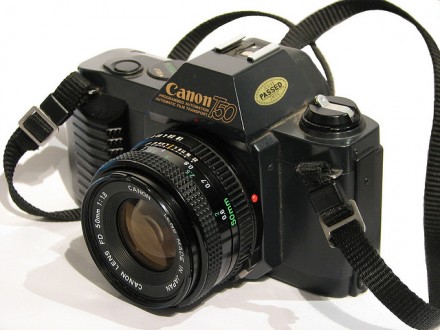
Fortunately, technology has helped develop photography to be accessible by the general populace. The introduction of film SLR has made it easier to take pictures and develop them. A couple of years later, digital cameras started coming out at ridiculous prices but as usual technological advancements has made possible the decrease of price. And at the moment, the price segmentation of cameras have made it much easier for people to get into photography.
A DSLR, digital single-lens reflex camera, as the name implies, uses a mechanical mirror system and pentaprism to direct from the lens to the viewfinder. The only difference with a film SLR is the use of digital media instead of film. Point and shoots on the other hand doesn’t have this system. So the sensor is constantly exposed to light. This pentaprism mechanism makes viewfinder work. Point and shoot viewfinders are crappy at best while an SLR will provide an accurate image.
There are three brackets to choose from when buying a DSLR. The entry level, the pro-sumer and the professional level cameras. The main difference between them will be the features and of course their price. For example, an entry level from Canon, the T3i, costs around $700 . A pro-sumer level camera, the Canon 60D, is around $900. And a Canon 1DS Mark III will cost you $7,000. One thing to note though is that all of these cameras can take great pictures. Having an expensive camera doesn’t mean that you will always get better pictures. The added features might help you but the skill and experience of the photographer will greater affect the outcome of the image.
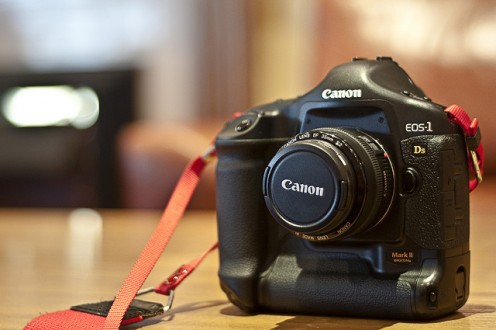
So if photographer skill and experience have a huge effect, why not just use any camera out there? A point and shoot camera can be great if you don’t want to carry a bulky DSLR or if the venue you are in doesn’t allow the use of DSLRs. The same can be said for phone cameras. But one thing that those two can’t achieve is better image quality per pixel. Camera manufacturers are competing in the megapixel race. They put a lot of megapixels in their cameras and use this as a marketing device. It seems to work well since a lot of people value cameras by their resolution. However this is completely unjustified. Unless point and shoots and mobile phones start to use larger camera sensors, the only thing the resolution would do is have larger pictures. That’s why an entry level Nikon D40, 6MP, can beat a high end point and shoot in image quality. It’s because of sensor size and not the megapixels.
Sensor size is not the only difference between a point and shoot and a DSLR. Changing lens is another major difference between the two. Point and shoot cameras have a fixed zoom focal length and you can’t go further than that. With DSLR, there are a variety of lenses that can cater to your needs. If you want to shoot landscapes, there’s a lens made for that. Or if you want to shoot wildlife, there’s a telephoto lens for that. Basically, a DSLR will offer more choices and more choices mean more creative leeway for the photographer.
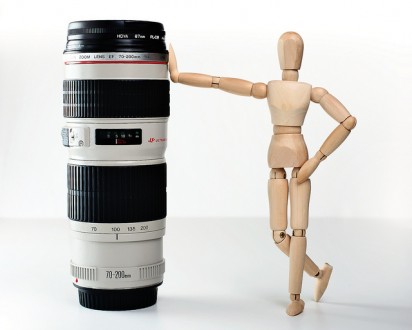
Other important camera settings are also left out in most point and shoot cameras, like shutter speed, ISO, aperture, white balance and etc. Having access to these settings are required to make most of your photography. It will be very hard to get pictures that you like if you can’t use the proper settings.
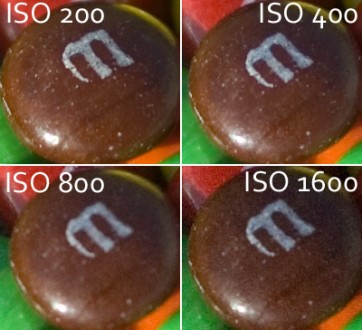
Ultimately, any camera you choose can get you great pictures. Cameras are but tools in capturing light. A point and shoot might do you well sometimes but a DSLR will always perform. You have more choices resulting in more creative output. And photography is all about about creativity and light.


